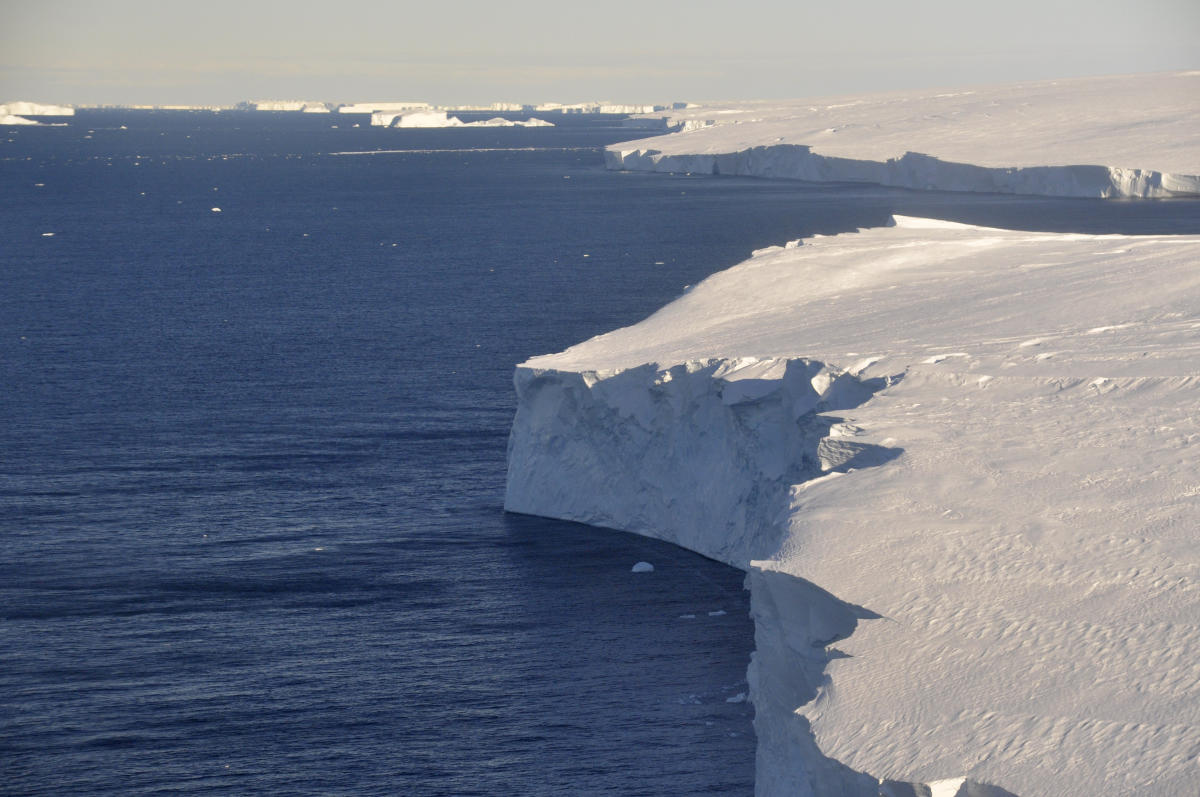No matter how much the world cuts back on carbon emissions, a new study has found that a significant portion of Antarctica is destined for an “unavoidable” melt. While the full melting process will take hundreds of years and increase sea levels by nearly 6 feet (1.8 meters), it will have a profound impact on future human settlements, according to the lead author of the study.
The study, published in Nature Climate Change, used computer simulations to estimate the future melt of ice shelves in Antarctica’s Amundsen Sea. Even if global warming is limited to a few tenths of a degree Celsius beyond the international goal, the study suggests that it will be insufficient to prevent ocean warming and the potential collapse of the West Antarctic Ice Sheet.
Kaitlin Naughten, the lead author and an oceanographer at the British Antarctic Survey, stated, “Our simulations suggest that we are now committed to the rapid increase in the rate of ocean warming and ice shelf melting over the rest of the century.”
While previous studies have highlighted the severity of the situation, Naughten’s work is the first to employ computer simulations to analyze the specific process of warm water melting the ice from below. The study explored four different emissions scenarios, and in each case, the ice sheet could not survive the ocean warming.
Naughten focused on the melting of gatekeeper ice shelves, which float over the ocean in Western Antarctica, an area already below sea level. Once these ice shelves melt, the glaciers behind them will flow into the sea without constraint.
The study examined the hypothetical outcome if future warming were limited to 1.5 degrees Celsius (2.7 degrees Fahrenheit) above mid-19th century levels, a benchmark set by international agreements. However, the melting process would still ensue despite these efforts. With global temperatures already having increased by about 1.2 degrees Celsius (2.2 degrees Fahrenheit) since pre-industrial times and breaching the 1.5-degree mark temporarily during the recent summer, the situation appears grim.
The study primarily focused on the region near Antarctica’s Amundsen Sea, which harbors the vulnerable West Antarctic Ice Sheet. One of its components, the Thwaites ice shelf, is melting rapidly and has earned the moniker “the Doomsday Glacier.” While West Antarctica accounts for just a tenth of the continent, it is more unstable than the larger eastern portion.
University of California Irvine ice scientist Eric Rignot, who was not involved in the study, grimly declared, “That part of Antarctica is doomed. The damage has already been done.” Ted Scambos, an ice scientist at the University of Colorado, reluctantly concurred, suggesting that the collapse of this ice sheet is inevitable.
Naughten cautiously refrained from using the term “doomed” and noted that it is possible for the world to reverse carbon levels and global warming in the future. However, she emphasized the inevitability of a slow collapse in this century.
Naughten remarked, “I think it’s unavoidable that some of this area is lost. It’s unavoidable that the problem gets worse… After 2100, we probably have some control still.”
Although Naughten acknowledged the loss of this portion of Antarctica’s ice sheet, she stressed that reducing emissions could still protect other vulnerable ecosystems. Coastal communities must either adapt or face abandonment in the wake of rising sea levels.
While the future may seem bleak, Naughten quoted former NASA scientist Kate Marvel, saying, “when it comes to climate change we need courage and not hope. Courage is the resolve to do well without the assurance of a happy ending.”
___
Read more of AP’s climate coverage at http://www.apnews.com/climate-and-environment.
___
Follow Seth Borenstein on X, formerly known as Twitter at @borenbears
___
Associated Press climate and environmental coverage receives support from several private foundations. See more about AP’s climate initiative here. The AP is solely responsible for all content.


